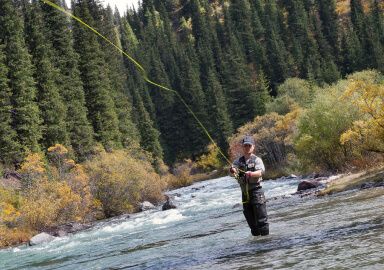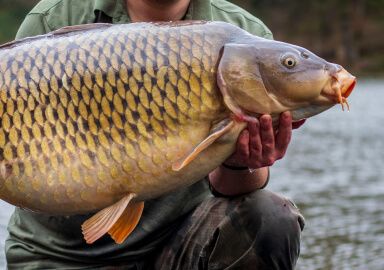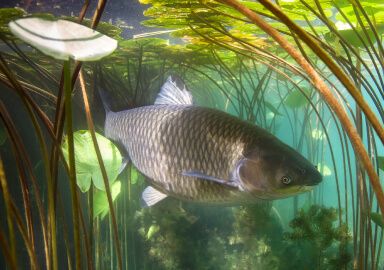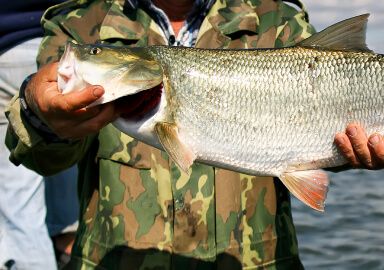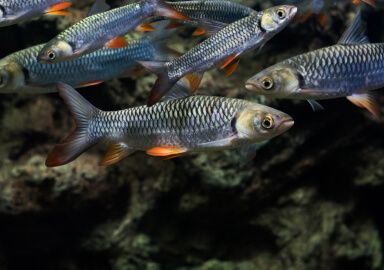Common Carp
A tall, fat, medium to large freshwater fish, the common carp is an important object of both commercial fish farming and recreational fishing.
View 6 listings
6
listings
–
price starting from
4
countries
–
to the nearest trip
Where and When?
The common carp is believed to have originated in the basin of the Danube, and original wild populations exist in the drainage of the rivers flowing into the Black, Azov, and Caspian seas. However, the common carp has been introduced all through Europe and the whole world, both in free state and on fish farms. In fact, it is the stocked ponds that offer most common carp fishing these days. If you’re after an unsophisticated fun and putting some fresh fish on the table, you may go to any fishing farm that lets anglers fish on their ponds. But if you’re after big, trophy fish, you should target either wild populations, or the lakes managed by angling clubs specifically with trophy fishing in mind. Carp are highly sensitive to water temperatures, becoming almost lethargic in winter, and especially active in the summer.
About Common Carp
The common carp (Cuprinus carpio) is the default carp species in Europe, and takes a prominent place both on the table and for the angling community. Unlike most species of Asian carp, the common carp’s body is much taller than it is wide, and covered with yellow or brownish scales. The head is relatively small, and the biggest individuals develop a characteristic humpback body. The common carp has strong glottal teeth and four barbels, sensory organs, with which it can, among other things, sense whether the bait has a hook in it. Like other carp species, the common carp thrives in fresh water with little or no current, preferring richly vegetated lakes and slow-moving rivers. It spawns in late spring or early summer, preferring shallow, very warm water. The world angling record stands at 34.35 kg (75 lb 11 oz) for a fish caught in France.
How to Catch?
Common carp fishing in Europe is a separate dimension of the angling sport. Any bottom fishing or hook-and-float rig may work with the standard carp offered by fish farms, that will typically weigh around 1 kg or 2 lb, give or take. But the trophy carp, which, according to most anglers, begins at 25 kg, or roughly 25 kg, requires a special rig. The specialized carp fishing pole is long (10-12 feet), strong and yet sensitive rig; the line should also be strong, and it’s essential to have an extra fine lead. Feeding is a necessary element in carp fishing; it is usually based on cereal, seasoned with aromatic attractants such as aniseed, sometimes mixed with a little clay for strength, so that the ball of feed maintains its shape once it’s thrown into the water by hand or with the help of a slingshot, and drops to the bottom more or less intact. Sometimes feed is placed in special wire containers, which do double duty as sinkers. A big trophy carp will give you a fight like few fish of similar size, and provides excellent sport.




